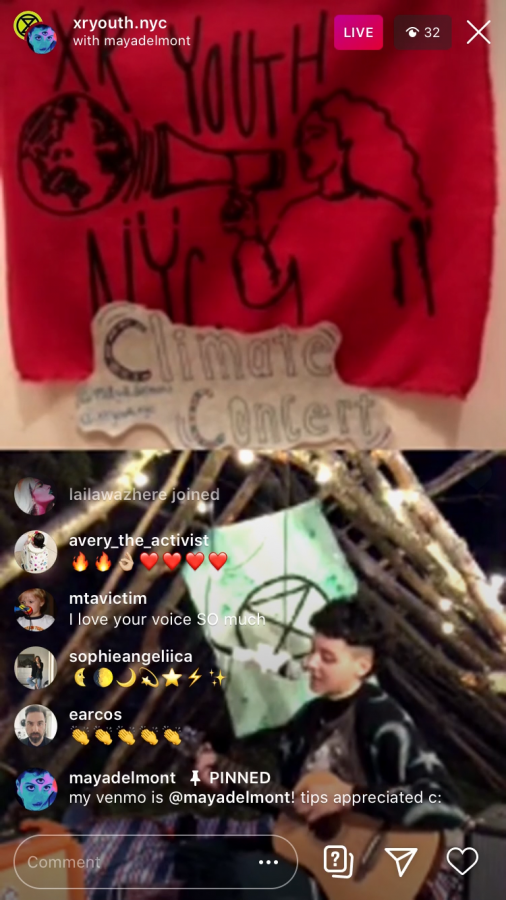What Does Community In Quarantine Look Like?
Youth musician Maya Delmont goes live with XR Youth NYC for their weekly Climate Concert series in order to provide a virtual space to foster connection during the Coronavirus pandemic.
Sometimes, my cure to ‘Zoom fatigue’ is another Zoom call with my community. It may seem antithetical, but these Zoom calls are free of agendas, mandates, and note-taking. They are for connection.
A few nights ago, I was on a video call meeting with some activists with whom I work, and after two hours of organizing and working, our conversation devolved (or evolved) out of productivity and into a virtual hangout. We ended up screen-sharing the New York Times’s “36 Questions that Lead to Love” and delving deeply into these questions together. We blurred the lines between coworkers and profound friends. We used the breakouts feature on Zoom to send coupled pairs into separate meeting rooms to explore our responses to the questions in a one-on-one setting. We ended up on Zoom for hours that night. And not every second was filled with entertainment or deep discussion; much of the time was filled with silence. But the act of being together was enough to satiate our profound need for community.
Being in quarantine during the Coronavirus pandemic is radically redefining what community even means. Generally, we see communities as networks of individuals, joined together by a common thread. But in practice, I think that most of us visualize community as the collective presence of people. It is about being in the same space with those with whom you identify, or with those whom you love. For many of us, these communities exist outside of the home, and they are what sustain us. And we do not have access to these right now.
But there are ways to find the tangible happiness that these communities often provide for us during this time. We simply need to adapt our perception of what community means. We can connect across walls and through city streets and through screens.
We need to call on other methods of connection besides being physically in a space together.
As I entered into this period of self-isolation, instead of disengaging from my communities and sulking in their absence, I brainstormed creative ways to reinvent them. In XRYNYC (Extinction Rebellion Youth NYC), a climate justice organization that I work with, we found that turning to art helped us to re-establish the connection that we desperately missed. We have been hosting digital “art builds,” where we all gather on Zoom and make art together, remotely. And we have also created a series of digital “climate concerts” where we offer a platform to a different musician for each meeting, to join an Instagram Livestream with us and sing and chat with some members from our activist circle.
We share something special during these community events. We gather together over art, over music, over shared experiences and connection. I often find myself especially emotional when I watch the musicians performing from their bedrooms with makeshift backdrops and DIY camera set-ups. We are all connected over the visceral emotion of shared music. I feel like I am holding hands with the other viewers, even though we are more or less anonymous behind the screen. We all pause our days to share a moment, regenerating together.
Olivia Wohlgemuth, a coordinator of XRYNYC, said that in these moments, “I still feel a lot of love, support, and solidarity around me, even when I can’t physically be with the people whom I love and organize with.” She sees our Netflix Parties, our virtual art builds, and our organizing-turned-friend calls as part of her way of restoring and maintaining our communities. “XR centers a regenerative culture, so we’ve been focusing on ways to stay connected during this time and regenerate together,” she said. “A regenerative community is a sustainable one.” These small, but connected moments help her to feel less isolated.
Community is hard right now. But it’s also more necessary than ever.
Being in quarantine during the Coronavirus pandemic is radically redefining what community even means.
Edie Fine (she/they), an Editor-in-Chief for ‘The Science Survey,’ is thrilled to be on the journalism staff for a second year. She loves telling stories,...
Theodore Wai is a News Editor for ‘The Science Survey.' Theodore finds writing and learning about the world to be the most appealing aspect of journalistic...











